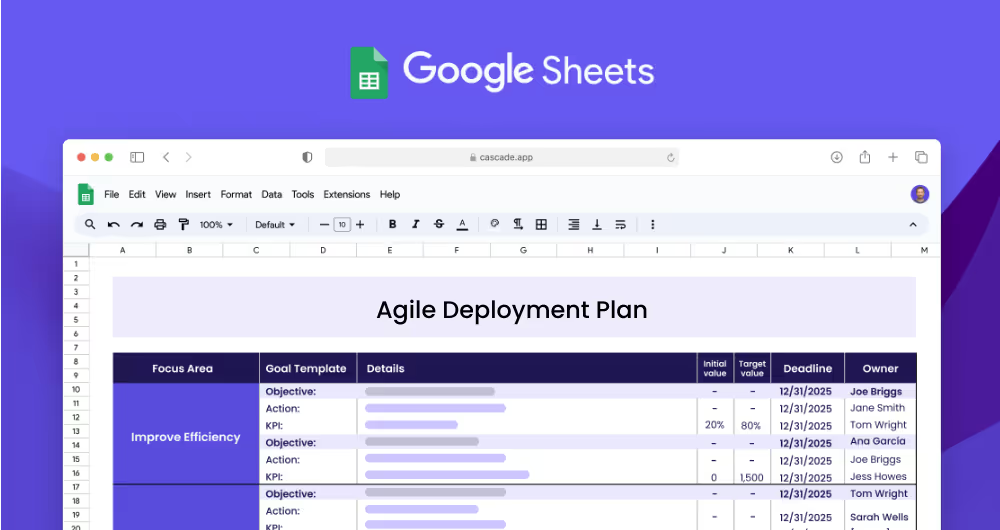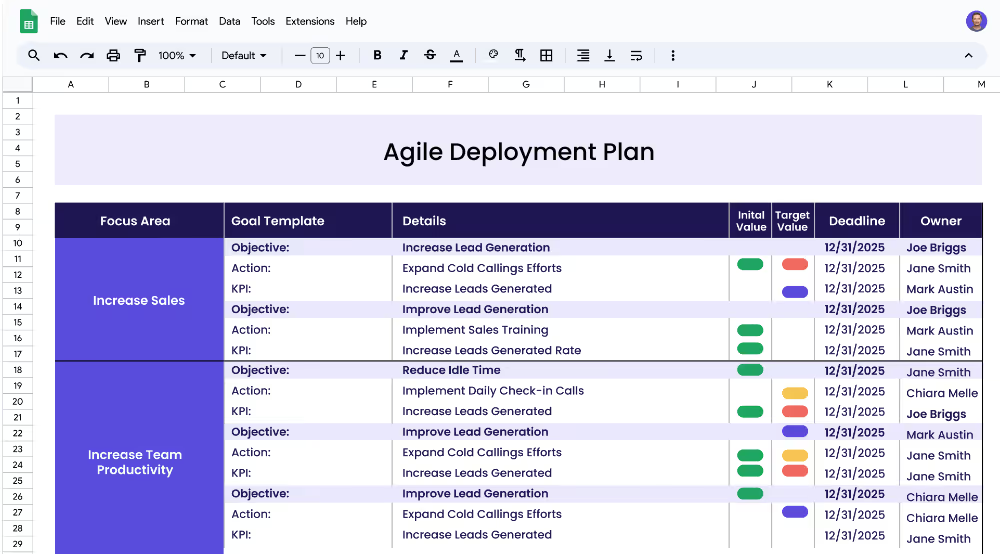An agile deployment plan is a strategy that outlines the steps, objectives and activities needed to efficiently deploy a software project. It is used to provide a roadmap and timeline that can be used to coordinate the deployment of the project across multiple teams, while also providing a structure for review and feedback. The agile deployment plan template is designed to help teams manage their agile deployment process with clarity and efficiency.
Each focus area has its own objectives, projects, and KPIs to ensure that the strategy is comprehensive and effective.
This agile deployment plan template is designed for teams that are looking for a comprehensive way to manage their agile software deployment projects. Whether you are just getting started with agile development or have been using the methodology for years, this template can help you create a structured and efficient plan for your deployment.
A focus area is a broad topic or area of your project that you would like to focus on. This could include topics such as streamlining the agile development process, improving customer feedback, or enhancing the deployment process. Once you have identified your focus areas, you can then create objectives and action plans to tackle each area.
Objectives are specific goals that will help you reach the focus area. These could include goals such as automating testing, reducing manual steps, increasing customer response rate, or increasing customer referrals. Objectives should be achievable and measurable.
KPIs, or key performance indicators, are measurable targets that will help you track the progress of your objectives. For example, you could set a KPI to reduce manual steps from 10 to 2, or reduce testing time from 10 days to 5 days. KPIs should be specific, measurable and achievable.
Projects are the action plans that you will use to achieve your KPIs. These can include activities such as automating deployment stages, implementing automated testing, or communicating product updates. Projects should be specific and have a clear timeline.
Ditch the spreadsheets and embrace the future of strategy execution with Cascade Strategy Execution Software. Our platform transforms strategic planning by integrating real-time updates, centralized collaboration, and automated reporting. This means your team can stay aligned, react swiftly to any market changes, and track progress with precision. Say goodbye to cumbersome, disconnected spreadsheets and elevate your strategy management with Cascade's dynamic tools. Sign-up for free or book a demo with one of our strategy experts to leap forward in your strategic execution.


